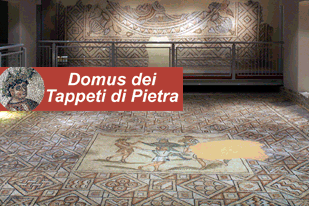The Church of the Suffrage in Ravenna.




The Church of the Suffrage in Ravenna. Hotels near the Suffrage.
photo: 1)facade of the church of the Suffrage, near the Clock square with Dante's tomb in the background, 2)façade detail, 3)church interior, 4)the church on the side of Piazza del Popolo between Palazzo dell'Orologio and Palazzo Rasponi del Sale
Santa Maria del Suffragio was consecrated in 1728, almost thirty years after the beginning of building work. The construction of the church acting to considerably embellish the look of the town in the Baroque era, especially thanks to the patronage of various religious associations: the legate authorities, the bishopric curia, congregations and confraternities.
Together with the Suffrage, which was particularly outstanding thanks to its location on one side of the Piazza Maggiore, this period also saw the rebuilding of San Domenico, the cathedral, Sant'Eufemia and Saints Giovanni and Paolo, and new facades were constructed for the Santa Maria in Porto as well as on the square and San Sebastiano and San Marco (of which only remains of the building are visible today beneath the clock.).
The church was constructed by the Confraternity of the Beata Vergine dei Suffragi, which was founded in 1635 with the aim of assisting those in need and to provide spiritual assistance to the dying.
On the facade, totally made of Istria stone, as well as the two statues of justice and peace, the centre is dominated by the emblem of the confraternity: the flames of purgatory enveloping some souls with an angel that intervenes to free them.
Complex Architecture, with a central plan, forming various units in a typical Baroque style, present inside an ornate decoration of stucco-work the work of Antonio Martinetti of Lugano, the founder of a school that was active in Ravenna throughout the 18th century.
The church plan is the work of the Roman Francesco Fontana, who also worked in Ravenna on the nearby Spreti building, in via Paolo Costa.
In a news bulletin relative to the year 1783, the church was remembered because it helped to save a peasant who risked being lynched by an angry crows, during one of the frequent protests by the poor people due to the lack of any bread or flour.
"The plebs wanted to stone a poor peasant of the parish of San Bartolo who for a bushel of wheat in the square wanted 14 paoli", an exorbitant sum.
"He earned the rage of the populace who swore at him and his master, and threw a portion of wheat on him, making him flee from their clutches.”
Very much later the church, was victim to a revolt. During the Red week, in June 1914, it was laid under siege, with the pews and furnishings piled up outside in order to act as a barrier to the troops that attacked from the square.
One person to exploit the situation was the Republican industrialist Giacomo Valli, from Lugo, who attached a red flag to the barricade with the wording "Drink Valli wine juice".
Prof. Gianni Morelli e Anna Missiroli
The pleasure of fine accommodation in the centre of Ravenna: we recommend the Fabbri hotels for a pleasant stay as follows:
The Centrale Byron Hotel, 3-star hotel in the centre of Ravenna, close to the main momuments;
The Bisanzio Hotel, 4-star hotel in the centre of Ravenna, close to the main momuments;
Once you have reached the hotel and parked your car, forget it and walk everywhere, because everything is within walking distance.
© reserved copyright





